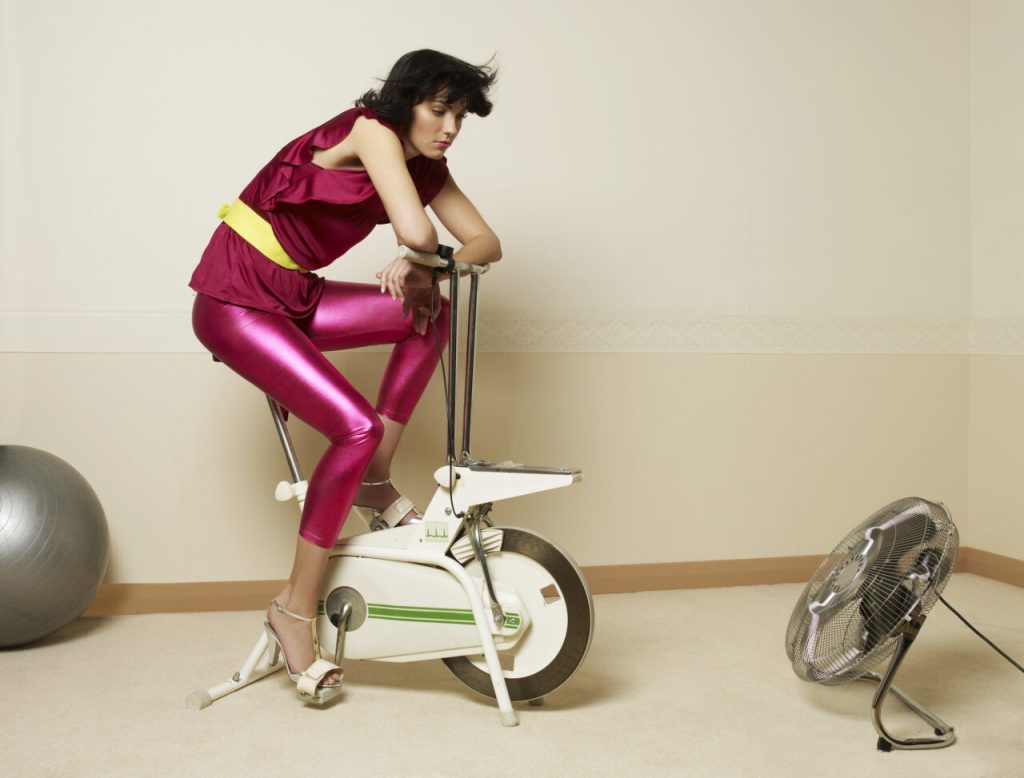Why movement matters even if you’re not a gym buff
We all know that sitting for hours at a desk or binge-watching shows on the sofa isn’t great for our bodies. Yet many of us feel “allergic” to exercise, especially after the two lockdowns and the rise of remote working. Short bursts of movement are scientifically proven to boost mood, improve circulation, and stave off fatigue. Even the World Health Organization recommends at least 20 minutes of physical activity each day. But if you dread the idea of a full workout session, these 10 essential exercises—demonstrated by expert trainer Paola Miretta—are perfect for easing back into motion.
1. Seated shoulder shrugs
Start seated with a straight back. Inhale and lift both shoulders up toward your ears, hold for 2 seconds, then exhale and release them back down. This simple move relieves neck tension and opens up your upper traps. Aim for 15 repetitions.
2. Neck rotations
Sitting or standing, drop your right ear toward your right shoulder, then slowly roll your chin down toward your chest and over to the left shoulder. Make a full circle in both directions, 5 times each. This improves flexibility and reduces stiffness after long hours at the computer.
3. Wall push-ups
Stand facing a wall at arm’s length. Place your palms flat on the wall, then bend your elbows and bring your chest toward the wall. Push back out to straighten your arms. Perform 12–15 reps to engage the chest, shoulders, and arms without the strain of full push-ups.
4. Mini squats
With feet hip-width apart, lower into a mini squat by bending your knees only halfway, as if you’re about to sit on a low chair. Keep your back neutral and chest lifted. Rise back up and repeat 15 times to awaken your quads and glutes.
5. Glute bridges
Lie on your back with knees bent and feet flat on the floor hip-width apart. Press through your heels to lift your hips toward the ceiling, squeezing your glutes at the top. Hold for 2 seconds, then lower. Do 12–15 reps to strengthen your posterior chain and support lower back health.
6. Seated leg lifts
Sit at the edge of a chair with back straight. Extend your right leg forward and flex your foot. Hold for 3 seconds, then lower. Alternate legs for a total of 10 lifts per side. This move improves hip mobility and engages lower-abdominal muscles.
7. Chair dips
Sit on the edge of a sturdy chair, hands gripping the edge beside your hips. Slide forward so your hips hover off the seat, then bend your elbows to lower your body, keeping them close to your sides. Push back up. Perform 8–12 reps to tone triceps and upper arms.
8. Standing calf raises
Hold the back of a chair for balance. Rise onto the balls of your feet, lifting your heels as high as possible. Slowly lower back down. Repeat 15–20 times to strengthen calves and improve ankle stability.
9. Knee-supported plank
Position yourself face-down on the floor, forearms on the ground and knees on the mat. Lift your torso so your body forms a straight line from shoulders to knees. Hold for 15–30 seconds, focusing on a braced core and neutral spine. This variation of the classic plank is gentle yet effective.
10. Gentle seated twist
Sit upright with feet flat. Place your right hand on the outside of your left thigh and twist your torso to the left, using your left hand on the chair back for support. Hold for 15 seconds, then switch sides. This stretch releases tension in the spine and improves digestion.
The Pilates connection
Many of these exercises draw inspiration from Joseph Pilates’s method of “Contrology.” While imprisoned on the Isle of Man during World War I, Pilates used bed springs to help fellow detainees move despite injuries and illness. His early “reformer” concepts evolved into modern machines still used in studios today. The guiding principle remains: small, controlled movements can yield big health benefits.
Tips for staying consistent
- Set a daily reminder: Even five minutes of movement is better than none.
- Create a mini-routine: Link these exercises to a habit, like after brushing your teeth.
- Track your progress: Note how long you hold the plank or how many repeats you complete.
- Mix and match: Rotate through the 10 exercises to target different muscle groups each day.
- Stay hydrated: Drink a glass of water before and after your mini-workout.
Embrace movement, nourish your body
Exercise doesn’t have to be time-consuming or intense. These ten moves, explained by trainer Paola Miretta, can be done anywhere—at home, in the office, or even while watching TV. By making movement a daily habit, you’ll boost your energy, sharpen your mood, and take a meaningful step toward a healthier you.
